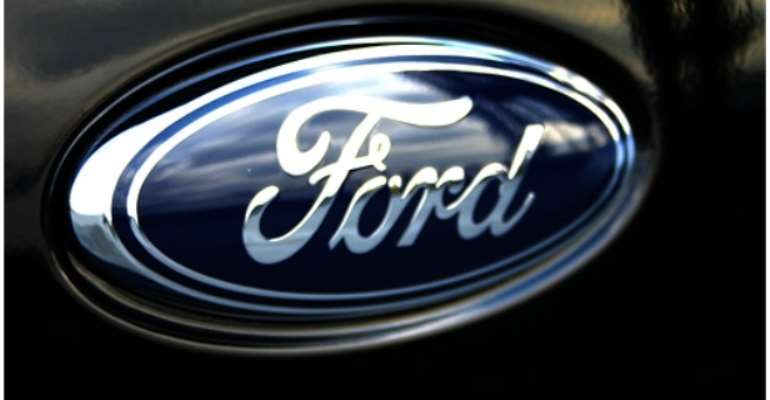Analysis: Detroit Automakers Face Test Of Leadership In 2014

General Motors Co (GM.
N) named a new chief executive, Ford Motor Co (F.
N) kept its old leader and Chrysler Group LLC's CEO averted a divisive public offering.
And that was just in the last 30 days.
This year is shaping up as a test of leadership at GM, Ford and Chrysler, five years after the U.
S.
auto industry's searing restructuring.
While the risks ahead are no longer life-threatening, how the companies respond will set their direction for years to come and signal whether the lessons of the financial crisis were embedded deeply enough.
"It's a turn of an era," Xavier Mosquet, senior partner and managing director at Boston Consulting Group, said in an interview.
"Frankly, it is a totally different, new type of competitive situation that is emerging.
" Analysts see 2014 as a transition year, with slowing growth in the U.
S.
auto market and companies facing a renewed mandate to gain ground overseas.
The 2015 contract talks with the United Auto Workers union also loom in the background.
In the weeks leading up to this year's Detroit auto show, GM, Ford and Chrysler have all taken steps that highlight the leaders who will help them face what Mosquet described as the most competitive North American market in decades.
GM vaulted its product development chief, Mary Barra, to the top spot last month.
Ford CEO Alan Mulally ended months of speculation by saying last week that he would not leave to run Microsoft Corp (MSFT.
O) .
And on New Year's Day, Sergio Marchionne struck a long-sought deal allowing him to merge Chrysler and Italy's Fiat, the two automakers he has led since 2009.
These moves signal that GM, Ford and Chrysler will maintain the strategies that have allowed them to emerge from the crisis with stronger balance sheets and more attractive vehicles.
But their leaders will need to be more flexible.
Analysts note that the skills needed in a turnaround differ from those needed during growth years, when a wrong bet can undercut a company's future.
"In fixing a company, the issues you have to deal with are very apparent because they are the issues that make or break a business," independent auto consultant Maryann Keller said.
"When you're running a company, you've got options," she added.
"You're not fixing anything, it's not financially broken anymore, but dealing with a very competitive market place is actually in some respects harder.
" ROLL CALL Each U.
S.
automaker enters the year at a different stage of its transformation, with Ford in first place, followed by GM and then Chrysler, according to many analysts and industry observers.
The positions reflect the speed at which each company has been able to restructure.
Mulally was hired in 2006 to lead Ford's turnaround by knitting together its global business units to achieve economies of scale.
His push helped the No.
2 U.
S.
automaker avoid the federal bailouts required by GM and Chrysler in 2009.
This year will be the busiest year of vehicle launches in Ford's 111-year history and marks the toughest test yet of Mulally's "One Ford" strategy.
It will also test the abilities of his presumed successor, Chief Operating Officer Mark Fields, who has spent the last year focused on improving quality.
But the cost of Ford's new launches - including the highly anticipated F-150 pickup truck that is expected to be unveiled at the Detroit auto show on Monday - will dent Ford's profit this year.
Ford must also grow its operations outside North America and convince investors of Fields' capabilities.
"In the case of Ford, the strategy has been defined and we're very clearly in the execution phases of the strategy that oftentimes is harder than crafting the strategy itself," Guggenheim Securities analyst Matthew Stover said.
"In the case of GM, I think they're still crafting their strategy.
" Under outgoing GM CEO Dan Akerson, Barra led an effort to simplify and unify the No.
1 U.
S.
automaker's engineering and design processes around the world to free up cash that GM can spend on in-car technology and other new features.
The selection of Barra reflects Akerson's desire to shake up a culture he said was bedeviled by "decades of poor decisions and indecisions and no decisions.
Barra will have to make this change, while continuing her work to shrink the number of vehicle platforms at GM, reverse losses in Europe and cement the company's position in China, the world's largest auto market.
Other challenges include expanding into other critical emerging markets elsewhere in Asia.
Meanwhile, Marchionne's slow-motion merger of Italy's Fiat (FIA.
MI) and Chrysler is yet another attempt at building global scale.
His agreement with Chrysler's minority shareholder allows Fiat to gain full control of the No.
3 U.
S.
automaker and avoid an initial public offering he publicly denounced.
Now he will focus on revamping Fiat's Alfa Romeo brand, a marque the Italian automaker has attempted to revive several times with little success.
However, what all three U.
S.
automakers have in common are the labor talks each will face in 2015 with the United Auto Workers union, which represents many of the companies' hourly U.
S.
workers.
Union leaders have already signaled a desire to claw back some of the cost-cutting changes to wages and benefits they surrendered over the last decade.
High on their list is the potential elimination of the two-tier wage scale that has allowed the U.
S.
automakers to bring costs in line with rivals like Japan's Toyota Motor Corp.
REUTERS
